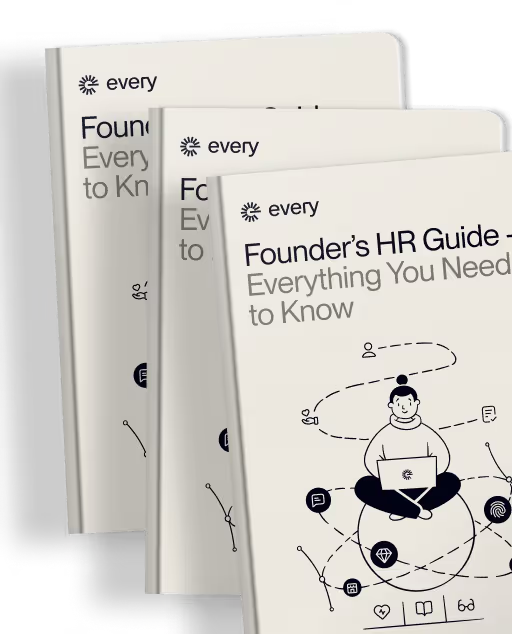Turning AI Mentions Into Traffic: Janak Sunil's Journey Building GEO Platform Bear

For years, Search Engine Optimization (SEO) has been one of the ways to drive organic traffic to your website. But the shift from traditional SEO to AI-powered search is reshaping how companies are thinking about traffic acquisition.
According to research by Fractl and Search Engine Land, 39% of marketers report that their website traffic has declined since Google launched AI Overviews in May 2024, a change that will likely keep progressing as AI continues to advance. In an age when AI agents increasingly make decisions for consumers, marketing to these agents will become essential.
Becoming ingrained in the world of search while building an internal search engine for GitHub with his co-founder, Siddhant Paliwal,Janak Sunil realized the future of search was moving to AI. The team set out to build Bear to help companies show up where it matters most.
Introducing Bear: Helping Companies Own Their Visibility on AI Search
Bear helps companies optimize their visibility on AI search engines through a unique focus on actionable strategies and ROI. While most solutions only focus on monitoring, Bear equips customers with practical information for improving search visibility. Including:
- Clear, prioritized content optimization steps to boost search appearances
- Data on how often your brand is mentioned and how AI platforms are describing your brand
- Automated outreach to blogs, social media creators, and other sources that influence AI search results
“People are seeing AI search as a huge pain point right now,” Janak explains. “Companies are losing 10 to 15% of traffic to LLMs." But by providing customers with actionable strategies to improve GEO outcomes, Bear has been able to help customers double their visibility on AI search engines, driving more traffic to their sites and blog posts.
As AI search continues to evolve and AI agents begin to take additional actions on behalf of users, Bear aims to help companies market to AI agents rather than directly to consumers, treating AI agents as the target audience.
Janak’s Journey to Bear
Janak began his founder journey while still in college, building UCLA’s largest apartment listing platform, BruinRent, which the university later acquired. After college, he broadened his startup experience with Product and Strategy roles at Pillow and Coinbase.
Janak first teamed up with Sid to build Supagit, a search engine for GitHub repositories. As the team became more immersed in search, they recognized that all of search was moving toward AI, and businesses would need help showing up in these new environments. The team pivoted from building a search engine to helping other companies appear on AI search engines, and were accepted to Y-Combinator’s Fall 2025 batch.
Just a few months later, Bear is serving over 70 clients, including notable brands such as Browserbase and Wispr Flow, and continuing to grow through customer referrals and social media.
Janak’s Advice for Fellow Founders
Janak’s journey to Bear has been far from straightforward. He built 14 things before Bear, and while some worked and some didn’t, he continued to learn along the way. “Getting started” is the most important step in the founder journey, he explains. “Follow your curiosity and build things.”
And as you go, Janak underlines the oft-shared Y-combinator philosophy—do things that don’t scale to get users. And then once you’ve got users, talk to them to ensure you’re solving real problems. “When you're a founder you can forget that you're building for someone else. You're building it for users and you want to talk to them and actually validate their problems before you dive deeper."
To learn more about Janak’s journey, you can follow him on LinkedIn and X, and check out usebear.ai
Up to 3,500 bonus and 3% cash-back on all card spend [3], 6 months off payroll, and 50% off bookkeeping for 6 months, free R&D credit.
Frequently Asked Questions
- How do I sign up for Every?
You can get started right away—just click “Get Started” and follow a short onboarding flow. Prefer a little help? One of our specialists can walk you through incorporation, banking, payroll, accounting, or whatever you need.
- What features does Every offer?
Every gives startups a complete back office in one platform. From incorporation and banking to payroll, bookkeeping, and tax filings, we take care of the operational heavy lifting—so you can spend more time building, less time managing.
- How is Every different from other tools?
Most competitors give you software. Every gives you a full-stack finance and HR team—plus smart financial tools that actually benefit founders. Earn up to 4.3% interest on idle cash and get cash back on every purchase made with your Every debit cards, routed straight back to you.
Every is not a bank. Banking services provided by Thread Bank, Member FDIC. Your deposits qualify for up to $3,000,000 in FDIC insurance coverage when Thread Bank places them at program banks in its deposit sweep program. Pass-through insurance coverage is subject to conditions. The Every Visa Business Debit Card is issued by Thread Bank, Member FDIC, pursuant to a license from Visa U.S.A. Inc. and may be used anywhere Visa cards are accepted.
- Is my data secure with Every?
We use end-to-end encryption, SOC 2-compliant infrastructure, and rigorous access controls to ensure your data is safe. Security isn’t a feature—it’s foundational.
Can I switch to Every if my company is already set up?Yes—you can switch to Every at any time, even if your company is already incorporated and running. Whether you're using separate tools for banking, payroll, bookkeeping, or taxes, we’ll help you bring everything into one place. Our onboarding specialists will guide you through the process, make sure your data is transferred cleanly, and get you set up quickly—without disrupting your operations. Most founders are fully transitioned within a week.
- What stage of startup is Every best for?
Every is designed for startups from day zero through Series A and beyond. Whether you're just incorporating or already running payroll and managing expenses, we meet you where you are. Early-stage founders use Every to get up and running fast—with banking, payroll, bookkeeping, and taxes all handled from day one. Growing teams love how Every scales with them, replacing patchwork tools and manual work with a clean, unified system.
We’re especially valuable for teams who want to move fast without hiring a full finance or HR team—giving founders more time to build, and fewer distractions from admin and compliance
- How long does onboarding take?
Onboarding with Every is fast and efficient. For most startups, the process typically takes between 3 to 7 days, depending on your specific needs and how much setup you already have in place.
If you're a new company, you'll be up and running quickly—getting your banking, payroll, and bookkeeping set up without hassle. If you’re transitioning from another system, our specialists will help you migrate your data, ensuring a smooth switch with no gaps or errors in your operations.
We guide you every step of the way, from incorporation to setting up automated payroll to handling your taxes—so you can focus on growing your business. Our goal is to make sure you're fully operational and confident in your back office in under a week.
Practical Questions to Ask to Ensure Your Bank is Well Managed
How much liquidity does the bank have on hand to cover unexpected withdrawals or shortfalls?
What percentage of the bank's deposits are invested in longer-term securities and loans, and what percentage is kept as cash reserves?
How does the bank diversify its investment portfolio to minimize potential losses and reduce risks?












